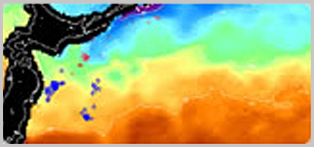Overview of the GPM Microwave Imager “GMI”
The GPM Microwave Imager (GMI) is a companion piece to the DPR aboard the GPM core observatory. This conical-scanning microwave imager with multiple frequencies and polarized waves is a successor of the Microwave Imager on the TRMM (TMI.) NASA is in charge of developing the GMI.
The major role of the GMI is to improve the accuracy of precipitation prediction by simultaneously performing observations with the DPR. In addition, it also bridges between the high-accuracy observations by the GPM core observatory and high-frequency observations by microwave imagers aboard the consolation satellites. Furthermore, the GMI is expected to diminish disparity in precipitation strength prediction due to biases between sensors through calibration of brightness temperature of the microwave imagers on the constellation satellites.
The major features of the GMI compared to the TMI are that the GMI is equipped with four more channels on the 166 GHz of a milli-wave zone (“Window” channel) and 183.31 GHz (water vapor absorption line) band in addition to the TMI’s nine channels on 10.65 to 89 GHz band. With those high-frequency bands, the TMI is expected to contribute to the improvement of the estimation accuracy of light rain and snow, which frequently occur mainly on land and sea in high-latitude areas. Additionally, the antenna radius of the GMI is 1.2 meters, which is twice that of the TMI, thus its spatial resolution will significantly increase.

